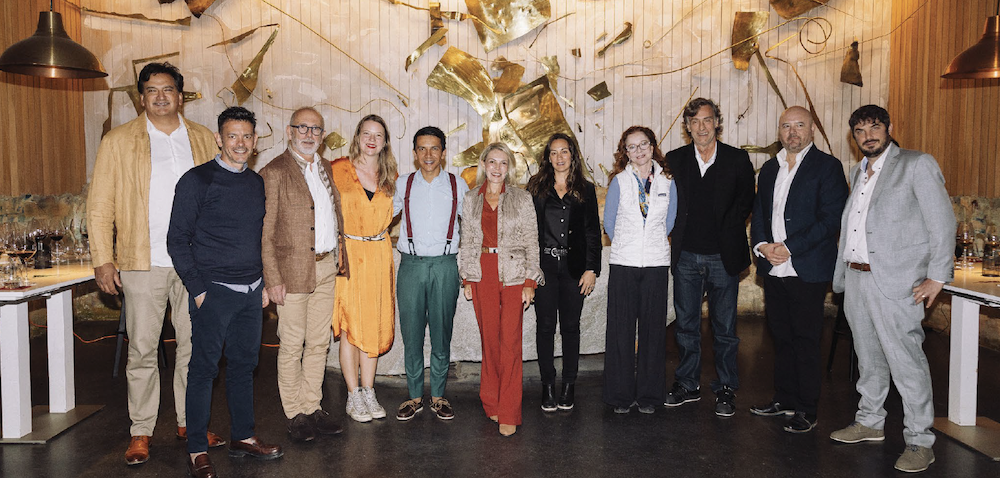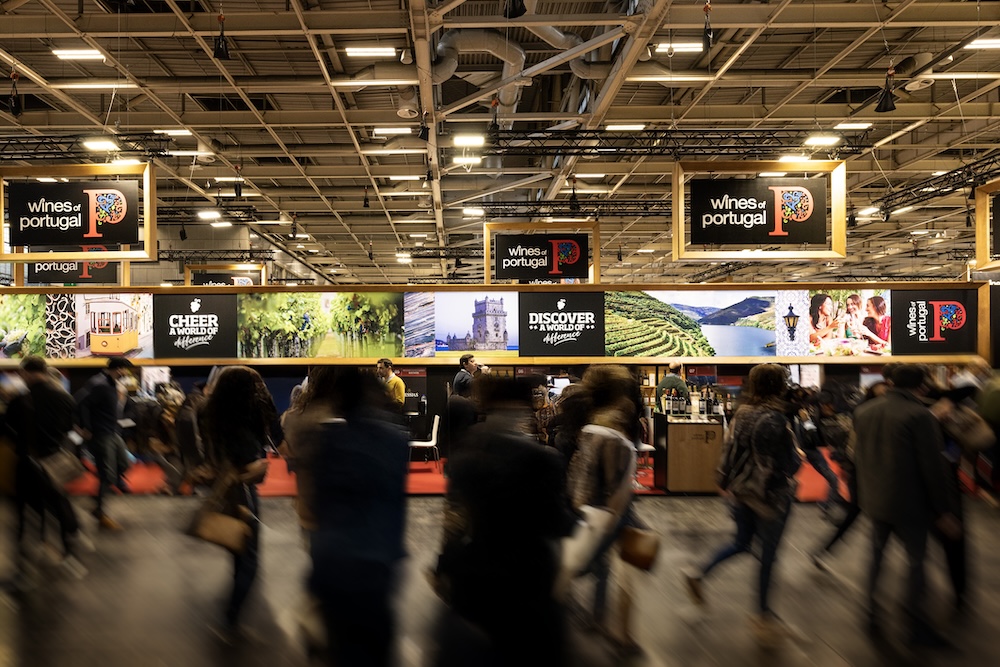
Discovery

Discovery
By By Isabelle Escande - Photographs: courtesy of the estates, posted on 27 June 2022
For many years, Navarre remained in the shadow of its prestigious neighbour, Rioja, but in more recent times it has made huge strides. Although it initially garnered a reputation for the quality of its rosés, it is now also praised for its increasingly high profile red wines. The decision to host the world Grenache competition in Olite, Navarre, this year, is no accident.
The region’s flagship varietal, Grenache is not the only grape variety that thrives on Navarre soils. Alongside other native varieties, French cultivars like Merlot and Cabernet-Sauvignon have also acclimatised well here. The explanation for this varietal diversity is the range of landscapes and weather conditions. Located at the point where three different climates – Mediterranean, Atlantic and Continental – meet, the DO Navarre covers 10,200 hectares which extend from the Pyrenees to the Bardenas desert, via the fertile soils lining the banks of the river Ebro.
The region produces not only rosés, but also whites, reds and even sparkling wines. Fresh, fruity wines reside comfortably alongside complex, well-structured offerings. If international fame came late to Navarre, it may well be because of this variety of styles. As Marcos Gorricho, who runs Bodegas Alconde, points out – in Navarre, “there is no single colour or flavour of wine, or exclusive grape variety. A uniform image is always useful for establishing an identity”.
Navarre certainly doesn’t lack a backstory. Its winegrowing traditions date back to Roman times. Subsequently, the many monasteries dotted along the Camino de Santiago de Compostela, which now attract large numbers of pilgrims, became a focal point for winegrowing expertise.
Pride in their winegrowing ancestry, however, has not stopped the region’s growers from innovating over the past few decades. In fact, their ability to reinvent themselves is what makes Navarre shine brightly in the global wine constellation. We travelled to meet four of these enterprising producers who explained their plans and faith in the future.


Located just 8 km from Pamplona, in the area that used to be at the heart of the Navarre region before phylloxera struck, is Bodega Otazu, Spain’s most northerly DOP-certified Pago estate. It would be wrong, though, to think that this is the property’s only defining feature – in fact, it has many. Its history dates back to the 12th century and its micro-climate has a distinctive Atlantic influence which “produces brightly coloured wines and freshness on the palate”. It earned its Vino de Pago status – a special distinction for wines made to the highest standards – because of the unique characteristics of its terroir.
The estate wines are made entirely from fruit grown on the property, which covers an extensive 116 hectares. Divided into blocks that are farmed separately, they are the focal point of a number of projects designed to safeguard the environment. That’s because, as managing director Guillermo Penso explains, at Bodega Otazu they feel that the future of the wine industry depends more on this type of initiative targeting quality and sustainability than on any outside endorsement.
Among its ongoing projects, the estate subscribes to the Vinasostenible scheme for sustainable winegrowing, in conjunction with the University of Navarre. The scheme is designed to incorporate farming solutions that foster a model showing greater respect for the ecosystem. The estate has also set itself a Zero Emissions target for 2023 and has launched a programme to recover native, pre-phylloxera grape varieties like Berués.
In harmony with its natural surroundings, its terroir and its history, the Bodega is also an open space where art and vineyards seem to fuse with each other seamlessly. It is home to a sizeable collection of outdoor modern sculptures. For Penso, art and wine are both “expressions of culture and a tribute to human creativity”. For visitors, being able to indulge in this symbiotic experience offers the ultimate gratification.


Two years ago, Bodegas Alconde ventured into uncharted territory, launching a regenerative viticulture project that is now an integral part of its identity. The first five hectares dedicated to this innovative technique have now grown to 42. And according to the estate’s manager, Marcos Gorricho, this is not just an experiment, it’s a full-fledged ethos the winery now adheres to, and has already proven its value.
Although adoption of the new techniques led to a slight decrease in output, “the rewards make the effort worthwhile”. Soil fertility has improved and even in terms of wine quality, the benefits are already tangible. It is still a little too soon to come to detailed conclusions, but as Gorricho explains, if the estate can help bolster biodiversity in the soils and combat climate change – at its own level – then the decision is obviously an easy one to make.
Admittedly, the journey is not easy, because it runs counter to everything that has been done up until now, and implies a step change in the way nature and the work of the winegrower are viewed. The aim is not to control nature at all costs, or to eliminate it even, but on the contrary to restore life in the soils through natural mechanisms. The more life there is in the soil, the more guarantee there is of healthy plants and quality produce. Also, development of micro-organisms in the soil promotes natural carbon sinks – and CO2 is the main gas responsible for global warming – and also limits erosion.
In a region increasingly affected by drought, having soils that absorb rainwater more efficiently becomes a vital necessity. So the estate has begun to introduce cover crops to encourage biodiversity and soil fertility, planting a variety of crops such as mustard, legumes and oats.
“Balance is everything”. Promoting a symbiotic relationship between the different components that form a vineyard’s ecosystem ultimately reduces human intervention in the vineyards. And that is precisely what Bodegas Alconde, which has always favoured fruit integrity in its balanced, aromatic wines, is aiming for. These authentically site-expressive wines are also the products of winegrowing know-how passed down from generation to generation.




Viña Magaña wines can be seen in Michelin-starred restaurants around the world and during banquets hosted by the Spanish royal family. Enjoyed by illustrious personalities like the Dalai Lama, they have successfully garnered a reputation that has travelled well beyond Spanish borders. The bodega, which is home to some of Spain’s oldest Merlot vines, has established itself as a Navarre benchmark.
The story began in 1972, in a way that might be described as picaresque. Determined to produce “a new, different and surprising wine”, Juan Magaña embarked on a mission to return to his home region, Navarre, to plant grape varieties from Bordeaux. This was a pretty tall order because at the time, this was forbidden and the young Magaña had to smuggle his Merlot and Cabernet-Sauvignon vines into the country. Added to this was the fact that virtually no-one would have taken a gamble on the arid, poor though mineral-rich land that he had set his heart on.
Ultimately, over time his decision was vindicated. The present-day estate extends over 100 hectares of vines and boasts modern facilities designed by the famous Navarre architect Rafael Moneo, along with an extensive cellar housing around 1,000 French oak barrels. The original Merlot and Cabernet-Sauvignon wines are still an integral part of the estate but other grape varieties are now showcased. Experimental crops have also been added in a bid to resurrect native varieties. Throughout its history, the estate has constantly focused on incremental progress. Every November, the finest new releases are presented at the Carrousel du Louvre in Paris and Viña Magaña wines are always included in the selection. No other Navarre bodega is invited, whispers Magaña, and very few Spanish estates take part.


Our journey through Navarre ends with the Castillo de Monjardin winery, and what better place to stop, just a stone’s throw away from the Camino de Santiago. In fact, it was one of the first wineries in Spain to open to the public.
It was founded in 1988 by husband and wife Sonia Olano and Victor del Villar who had decided, right from the outset, to make it their mission to produce wines that were different. “We succesfully wrought changes in areas that seemed to be cast in stone in the wine industry”, explains Olano. They pioneered many different aspects of winegrowing and were among the first on the Iberian Peninsula to harvest by night and produce Chardonnay fermented and matured in barrels.
Their vineyards are located 600 metres above sea level in a cool area which promotes acidity in the grapes and allows them to “mature the wines delicately in new oak barrels to extend their longevity and enrich their palate”. Whilst Chardonnay and Pinot noir thrive at high elevations, other grape varieties have been planted at slightly lower altitudes in the valley, explains Olano. The bodega produces a distinctively broad-ranging selection of wines, and its portfolio even includes two sparkling wines.
Despite the fact that its reputation is now well-established, its founders continue to innovate. So what is their next project? “We have just retrieved some old, traditionally farmed Grenache vines and we think they will produce some very interesting wine”. We can certainly vouch for that.


Discovery

Discovery

Discovery